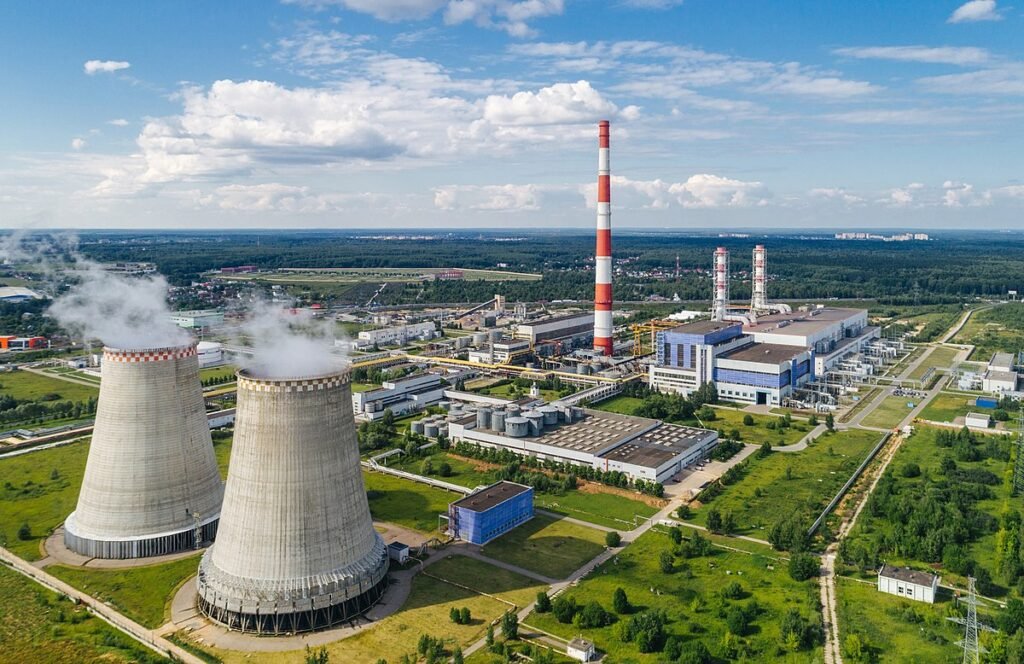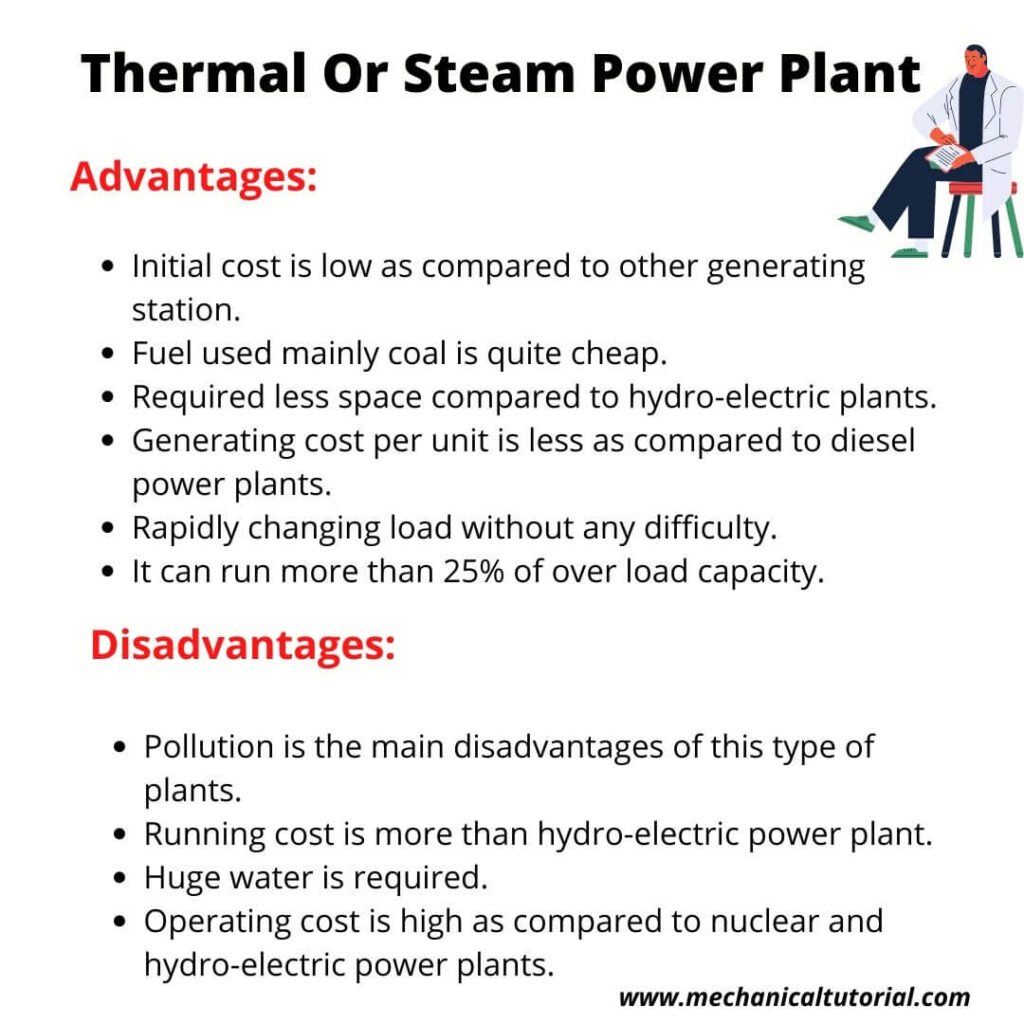
Thermal Power Plant Introduction
With the improvement in GDP, the economy in India has experienced significant growth in energy consumption after Independence. Thermal Power plant use different fuels such as coal, natural gas, diesel, etc. to convert liquid to steam to generate electric power. In today’s article, we will talk about thermal energy in India and its production here, its importance in India, and a list of thermal plants in India with details.
Thermal Energy in India
Thermal energy is the energy that comes from the temperature of the heated substance. Furthermore, mostly the thermal plants harness the power of steam to drive the turbines. Thermal plants are generally used in the Industrial sector mainly for generating electricity.
With the increasing population in India, its energy consumption rate is increasing and it uses about 6% of the world’s primary energy. If we check of last 69 years after the Independence of India there is an increase in power capacity from 1300MW to 267,000MW. But despite such an increase in the production of electricity, demand is more than it is produced.
India primarily focuses on three types of thermal power plants which are listed below along with their installed capacity as of starting 2021:
- Coal: 206404.50 MW
- Gas: 24956.51 MW
- Liquid Fuel(Diesel): 509.71 MW
Fossil fuels are mostly exploited in thermal power plants for the production of electricity, particularly coal, which accounts for 76% of the total electricity produced in the country. As per the data from the ministry department, there has been a 6% growth in coal production in the year 2021 compared to 2020. Additionally, the total capacity of thermal power plants as of January 2021 in India was 231870.72 MW.

How Thermal Power Plants Produce Electrical Energy
Thermal power plants generate electricity with the help of fuels. Thermal power generation is the process of burning oil, liquid natural gas (LNG), coal, and other substances to generate steam power that rotates generators and produces electricity. This type of generation plays a vital role in supplying electricity because it can be adapted to the various ways in which electricity is used (demand fluctuation) as output grows. The burning of fuels such as coal, or gas fires a boiler to generate high-temperature, high-pressure steam. This steam is used to drive a turbine which is attached to a generator that generates electricity. There are three types of thermal power generation
- Steam power generation
Fuels such as heavy oil, liquefied natural gas, and coal are burned inside a boiler to generate steam. This steam is used to rotate the impeller of the steam turbine. This drives the power generators connected to the turbine that generates electricity. This type of thermal plant has a thermal efficiency of around 42% to 46. A general example of this plant is Vindhyachal Thermal Power Station located in Madhya Pradesh.

- Combined cycle power generation:
A combined cycle power plant mainly has a gas turbine and a heat recovery system. The gas turbine compresses air and mixes it with fuel to a very high temperature. The hot air of the fuel mixture moves through the gas turbine blades and drives a generator that produces electricity. Second, there is a heat recovery steam generator (HRSG) that recovers exhaust heat from the gas turbine that would otherwise escape. This system is more efficient than an oil-based thermal-powered plant. An example of a thermal plant using this type of method is the Dholpur Combined Cycle Power Station with an installed capacity of around 330MW.
- Gas turbine power generation
Gas-based turbine power generation makes electricity by burning fuels such as LNG or kerosene to produce high-temperature combustion gases with a sufficient amount of energy to rotate a gas turbine. Ramgarh Gas Thermal Power Station uses this principle to generate electricity which is located in Rajasthan. Gas-based thermal power plants are increasing more and more nowadays and the government of India is also encouraging gas-based power plants because there are many disadvantages to coal-based power plants..

Advantages and Disadvantages of Thermal Power Plants
Advantages-
- The fuel (coal) is relatively inexpensive.
- The less initial investment is required compared to other generating stations.
- Thermal power plants can be found anywhere there are coal and water.
- Fuel can be transported by rail or road to the plant.
- Compared to hydroelectric power stations, it requires less space. As a result, thermal plants are able to respond to load demand more effectively and support the performance of the electrical grid.
- There are steady supplies of coal, oil, and natural gas at this plant, so it is less expensive than a diesel power plant to generate electricity

Disadvantages-
- As a result of coal combustion in a thermal power plant, there is a large amount of smoke and fumes resulting in pollution and increasing carbon footprints.
- Large amounts of water are required for the condensation of steam. The steam power plant has high running costs compared to hydroelectric power plants.
- Handling coal and disposing of ash takes up a great deal of space.
- Coal is used as fuel, which is an exhaustible natural resource. Steam power plant maintenance is complex.
- A power plant’s starting time is quite long compared to other plants.
- Efficiency is around 30 to 35 percent less than other power plants.
List of Thermal Power Plants in India
| State | Thermal Power Plant |
| Madhya Pradesh | Amarkantak Power Plant |
| Satpura Thermal Power Plant | |
| Sanjay Gandhi, Birsinghpur Power Plant | |
| Shri Singaji Thermal Station Dongalia | |
| Singrauli Super Power Station | |
| Vindhyachal Power Station | |
| Maharashtra | Amravati Thermal Power plant |
| Chandrapur Thermal Power plant | |
| Khaperkheda Thermal Power plant | |
| Tiroda Thermal plant | |
| Chandrapur Power plant | |
| Solapur Super Power Station | |
| Mauda Super Power Plant | |
| Uttar Pradesh | Anpara Power plant |
| Dadri Power plant | |
| Feroz Gandhi Unchahar Thermal plant | |
| National Capital plant | |
| Obra Thermal plant | |
| Rihand Super Power plant | |
| Rosa Thermal plant | |
| Bihar | Barauni Thermal Station |
| Patratu Thermal Station | |
| Khalgaon Super Thermal Project | |
| Karnataka | Raichur Thermal station |
| Bellary Thermal station | |
| Yermarus Power Station | |
| Udupi Power plant | |
| Chhattisgarh | Sipat Power Plant |
| Lara Super Power Plant | |
| Korba Power Plant | |
| Bhilai Power Plant | |
| Jharkhand | Bokaro Power plant |
| Patratu Power plant | |
| Rajasthan | Chhabra Power plant |
| Kalisindh Power plant | |
| Kota Power plant | |
| Suratgarh Super Power Plant | |
| Barsingsar Thermal Station | |
| Anta Power Station | |
| Ramgarh Gas Thermal Station | |
| West Bengal | Durgapur Thermal plant |
| Farakka Thermal plant | |
| Mejia Thermal Power Station | |
| Kolaghat Power Station | |
| Bakreshwar Power Station | |
| Durgapur Steel Thermal Station | |
| Budge Budge Thermal Power Plant | |
| Sagardighi Thermal Power Station | |
| Tamil Nadu | Ennore Thermal Power plant |
| Mettur Thermal Power plant | |
| Neyveli Thermal Power Station | |
| Tuticorin Thermal Power Station | |
| IND Barath Thermal Power Plant | |
| Gujarat | Gandhinagar Thermal Power plant |
| Mudra Thermal Power plant | |
| Sikka Thermal Power plant | |
| Ukai Thermal Power plant | |
| Wanakbori Thermal Power plant | |
| Akrimota Power Station | |
| Kutch Lignite Thermal Power Station | |
| Sabarmati Thermal Power Station | |
| Odisha | Hirakud Captive Thermal Power plant |
| Jharsuguda Thermal Power plant | |
| Talcher Thermal Power plant | |
| Andhra Pradesh | Ramagundam Power plant |
| Simhadri Power plant | |
| Assam | Namrup Power Plant |
Conclusion:
At present India’s main power generating hub is thermal power which is more than 60% of installed capacity. As Per the researchers, India’s coal reserves are high compared to other fossil fuels. Coal usage is dominated in thermal plants and still, it will last 100 years compared to 50 years for gas and 16 years for oil. But building a new thermal plant is not on the development list in India anymore due to various reasons. The government’s intentions are clear and evident to make the country carbon neutral by 2070. India’s current plan of making the country rely on renewable sources might impact coal-based thermal plants from existing 71% to 55% by 2030.
- To collect information about Solar Energy- Click Here
- To visit the official website of the Indian Ministry of Power- Click Here
- To visit the Ministry of New and Renewable Energy- Click Here